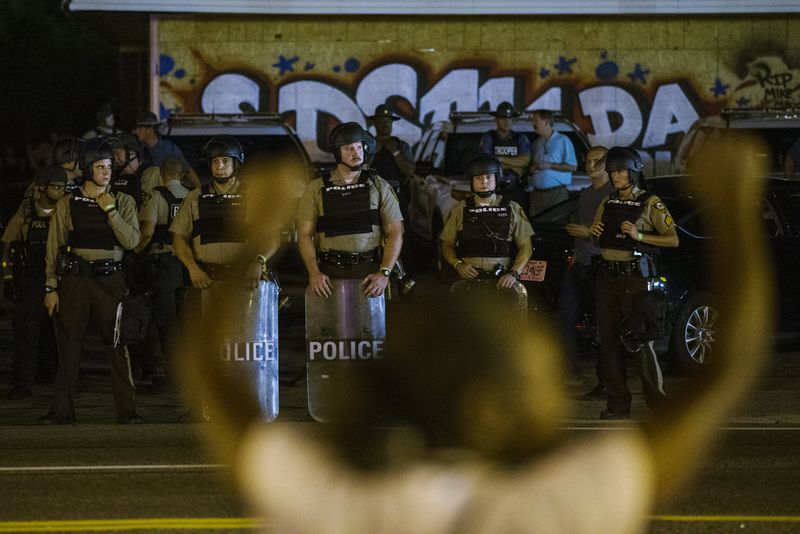By Scott Malone
FERGUSON, Mo. (Reuters) - The St. Louis suburb of Ferguson, Missouri, the site of a year of occasionally violent protests over the police killing of an unarmed black teen, will remain under a state of emergency for at least another night, county officials said on Wednesday.
The state of emergency, which gives county police oversight of security in the city of 21,000 people, was declared following a shooting incident at a protest Sunday night to mark the one-year anniversary of the death of 18-year-old Michael Brown on Aug. 9, 2014.
The decision came after two nights of relatively peaceful protests, with the St. Louis Country police reporting no arrests or reports of injuries during a small demonstration by several dozen people Tuesday night into Wednesday morning.
"I am pleased to report our law enforcement officers have established order while preventing further acts of violence in Ferguson," said County Executive Steve Stenger, in a statement. "It is because of their ability to maintain order that I find it prudent to continue the state of emergency for at least the next 24 hours."
A crowd of several dozen protesters took to West Florissant Avenue, which has borne the brunt of the rioting, on Tuesday night. Demonstrators occasionally attempted to block traffic and threw rocks at police, but the conflict was defused, and no injuries to civilians or police were reported, county police said early Wednesday.
Police shot and critically wounded an 18-year-old black teen they said had fired at them during Sunday night's protests, when windows of businesses along the commercial stretch were smashed.
Police on Tuesday released a video of that shooting that they said showed the teen, Tyrone Harris, drawing a pistol from his pants. Harris has been charged with four counts of assault on law enforcement, five counts of armed criminal action, and one count of shooting at a vehicle. Bond for Harris, who is black, was set at $250,000.
Harris' father has denied that his son had a gun. Others in Ferguson have said he might not have realized that he was firing on plainclothes police officers.
Brown's death and similar police killings that followed in Baltimore; North Charleston, South Carolina; Cincinnati; and Arlington, Texas, sparked a year of protests and debate across the United States about race, justice and law enforcement's use of force.
A grand jury and the U.S. Justice Department found Darren Wilson, the officer who shot Brown, broke no laws in the shooting. A separate Justice Department report found that the police department in Ferguson routinely violated the rights of black citizens, who make up two-thirds of the city's population.

Wilson has since left the force. The officer who killed a 19-year-old black Texas college football player last week was fired on Tuesday.